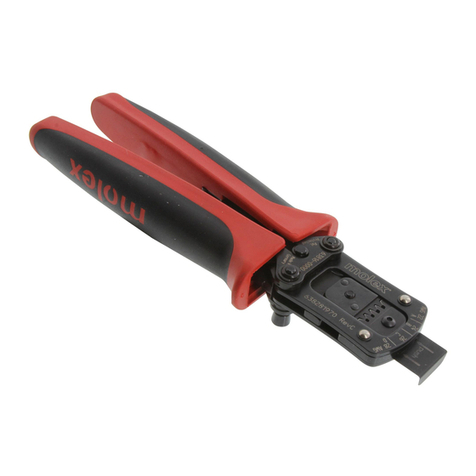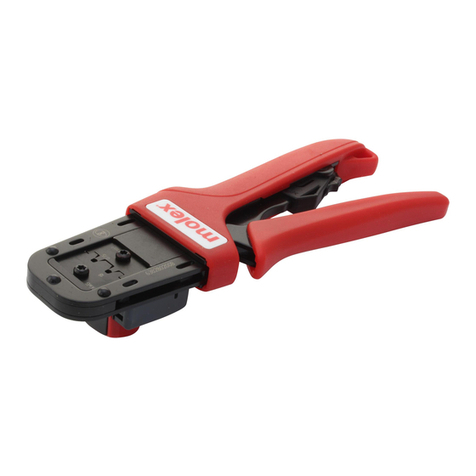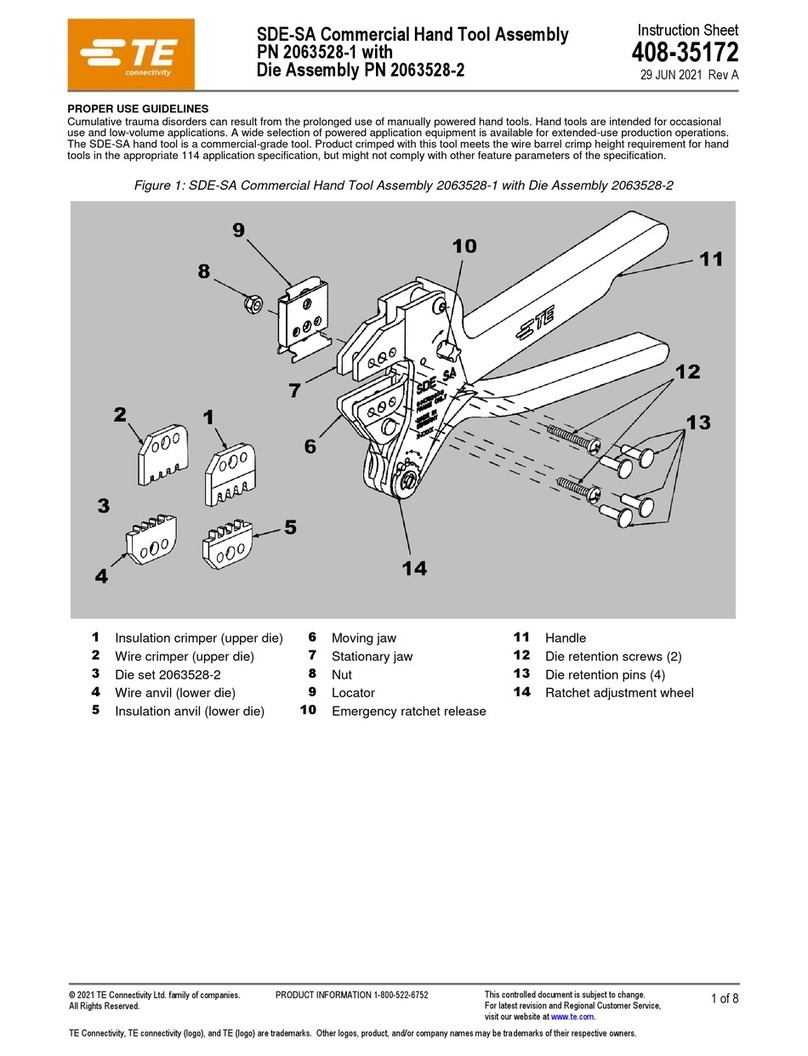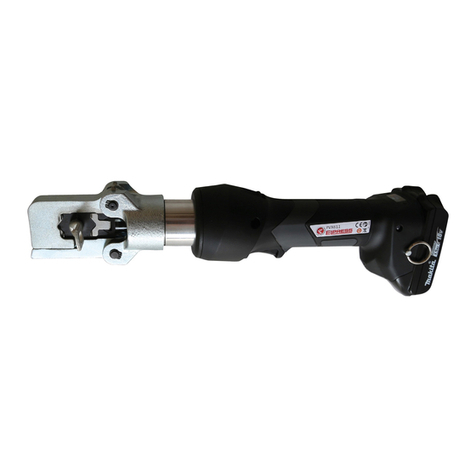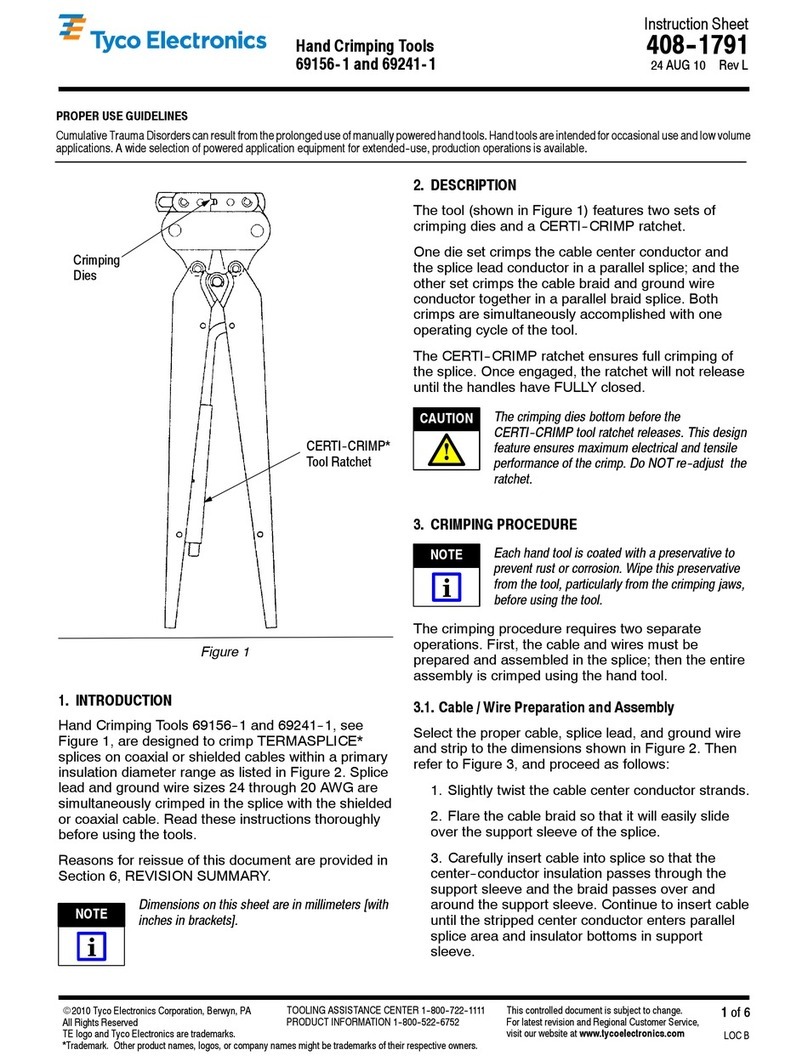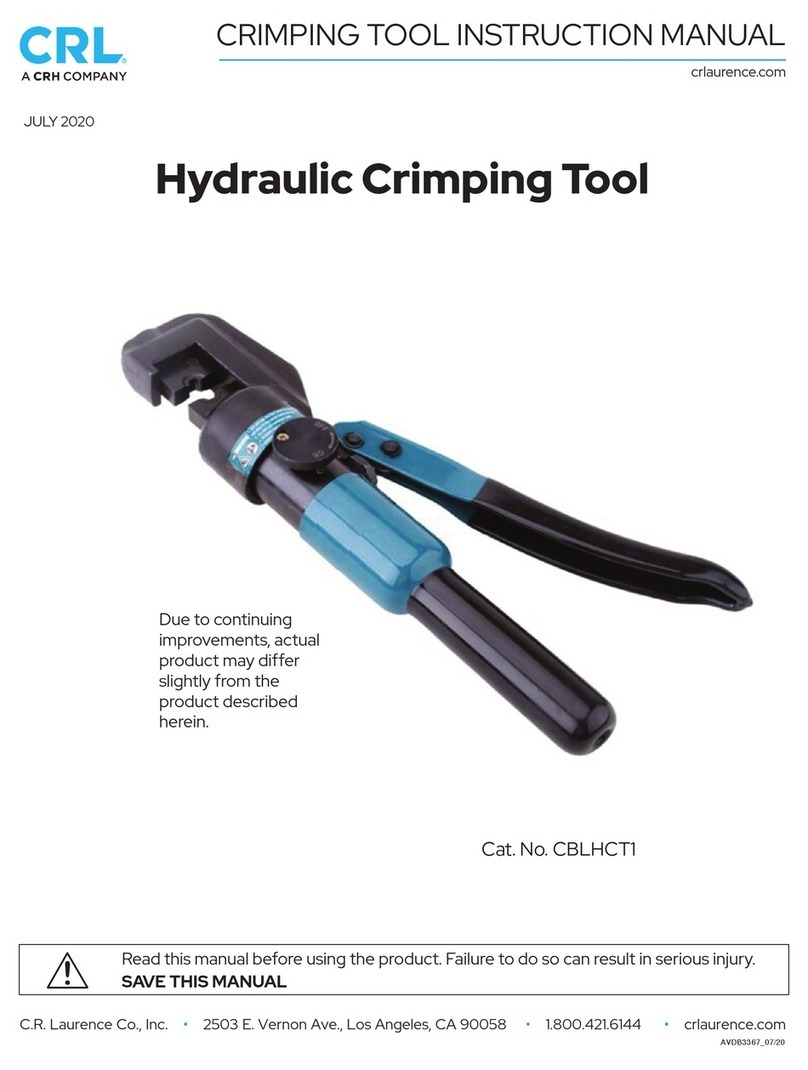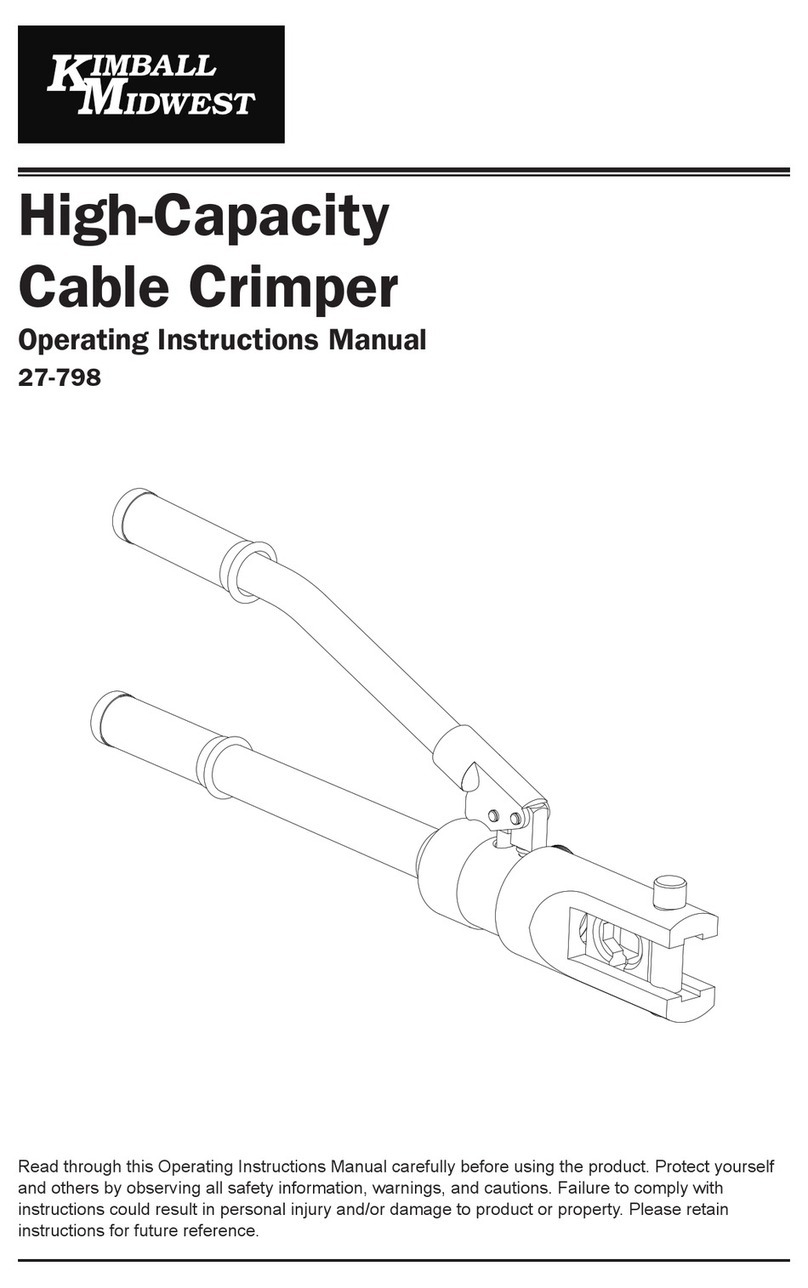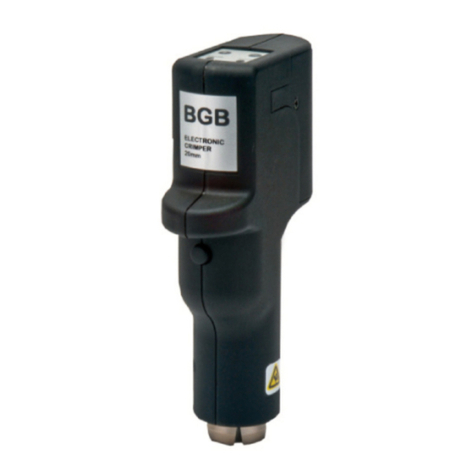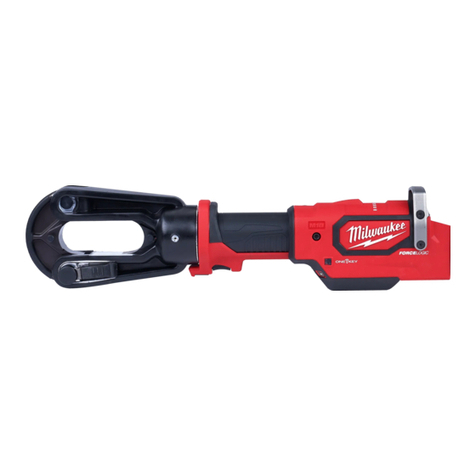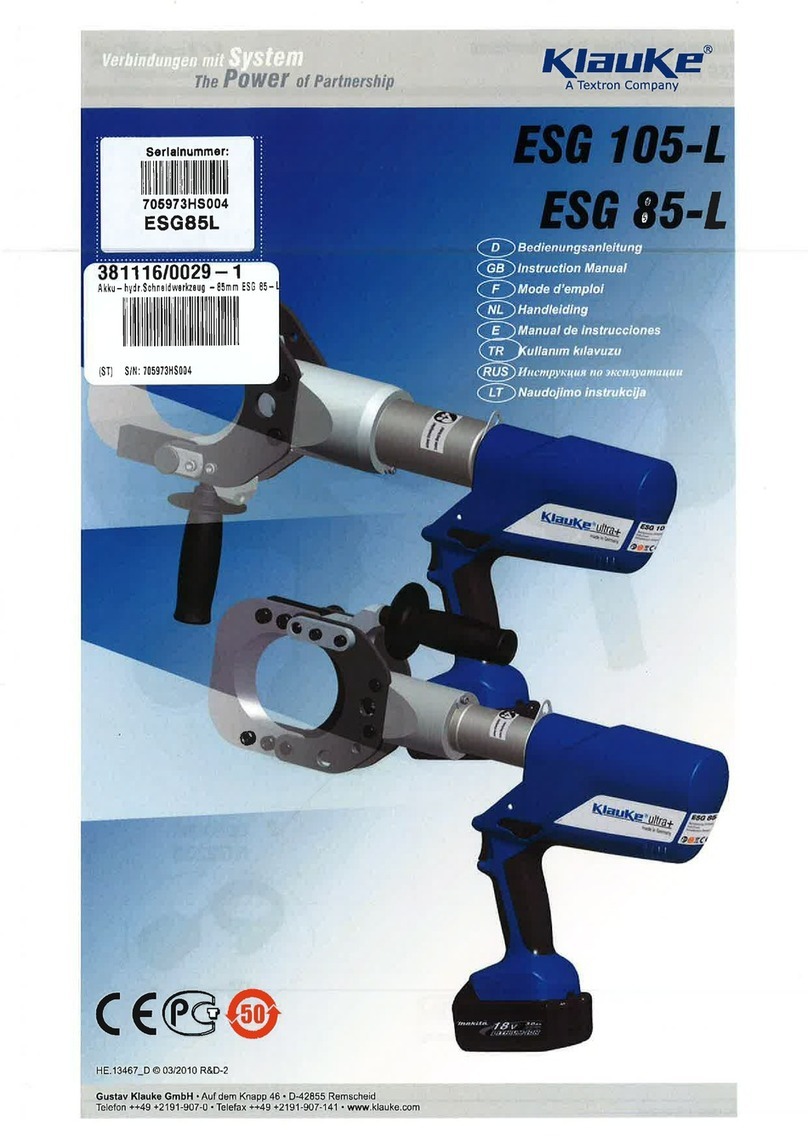molex 63811-1500 User manual
Other molex Crimping Tools manuals
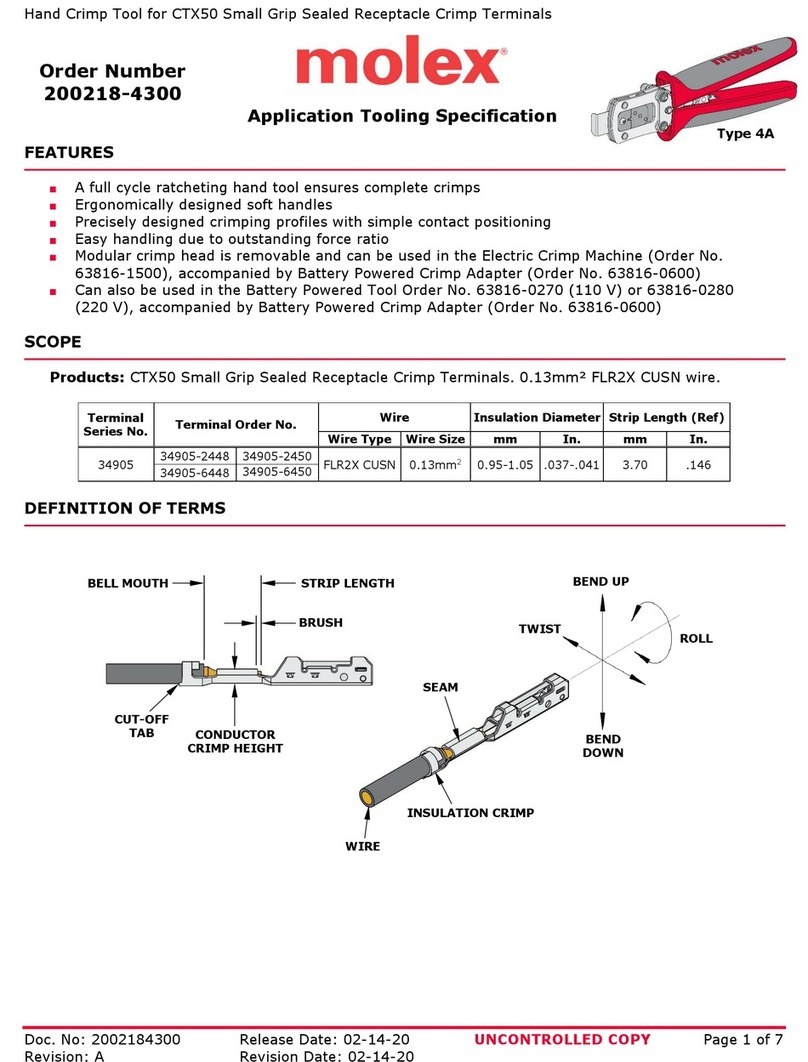
molex
molex 207129 Series User manual
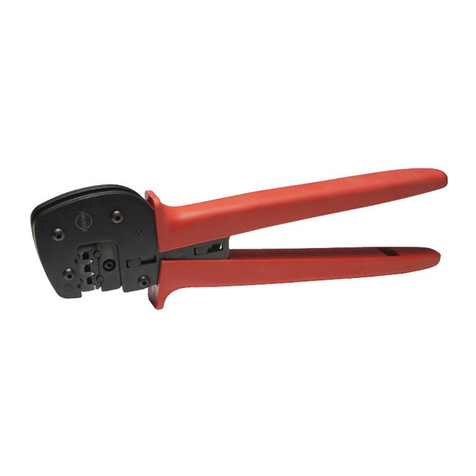
molex
molex 63811-4700 User manual
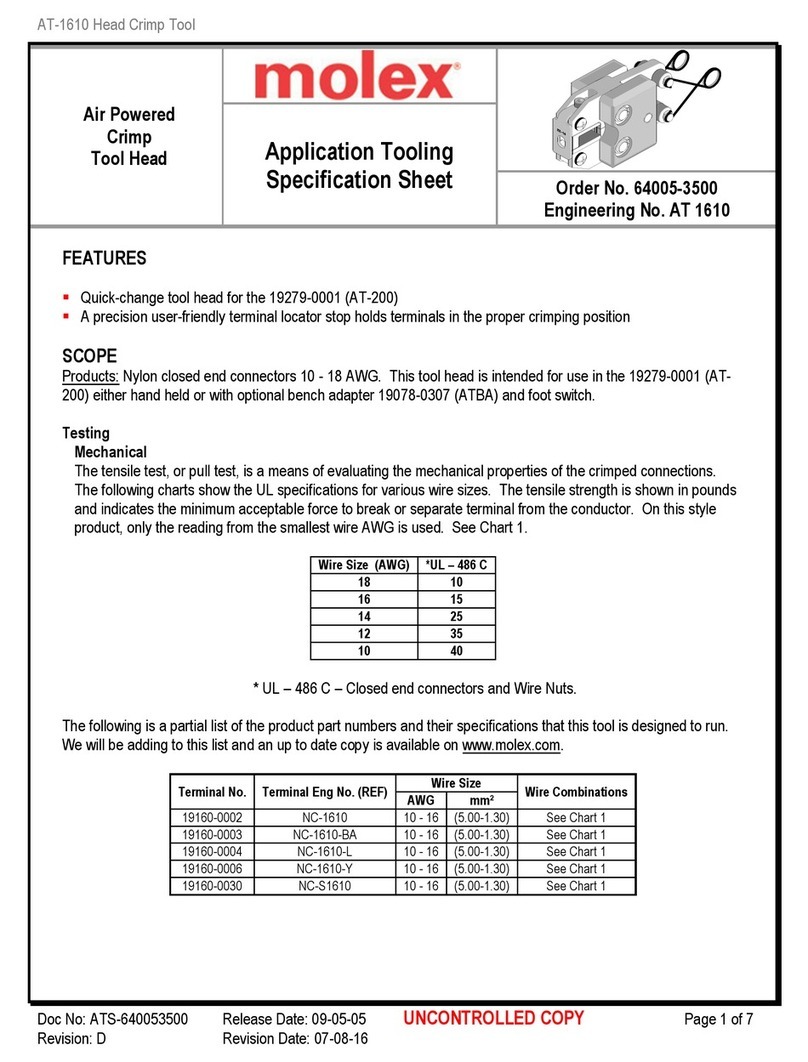
molex
molex AT 1610 User manual
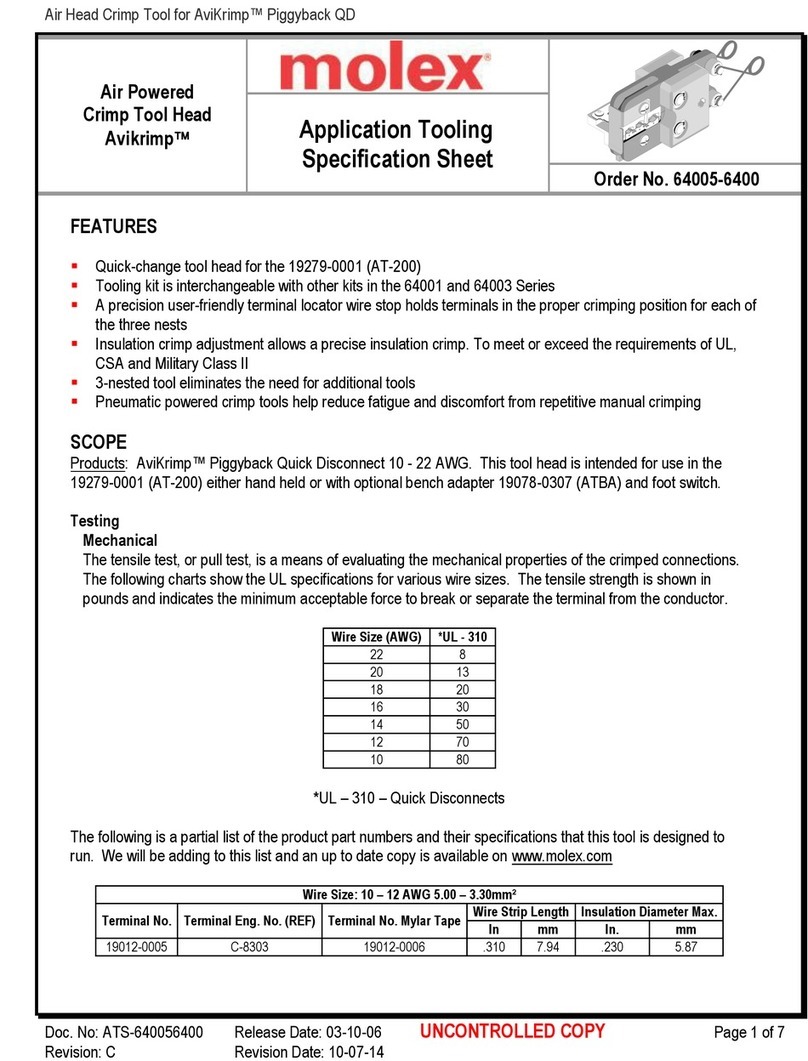
molex
molex 64005-6400 User manual
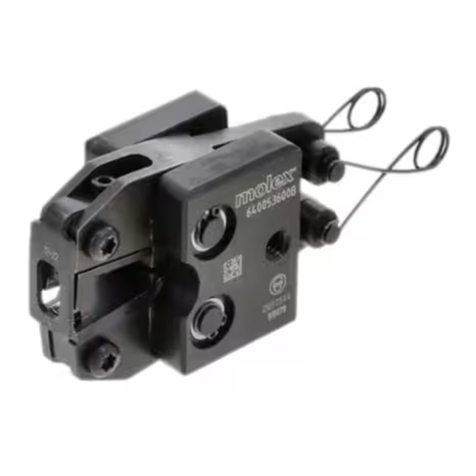
molex
molex AT 2212 User manual
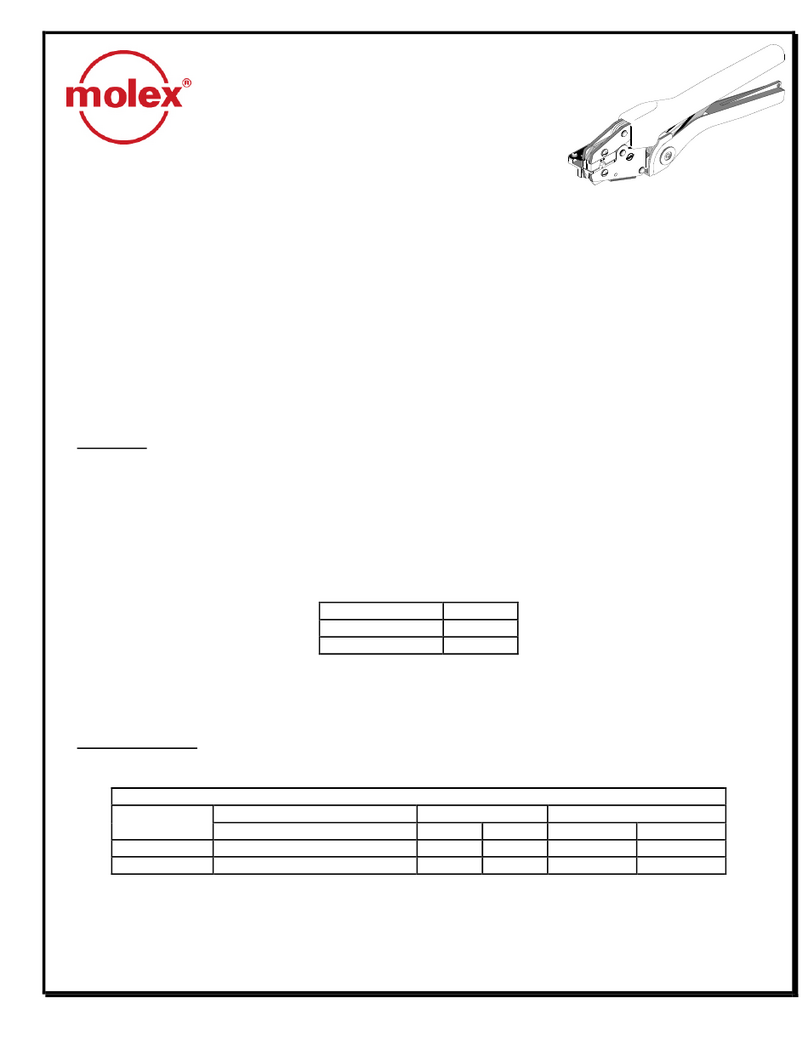
molex
molex 64001-7300 User manual
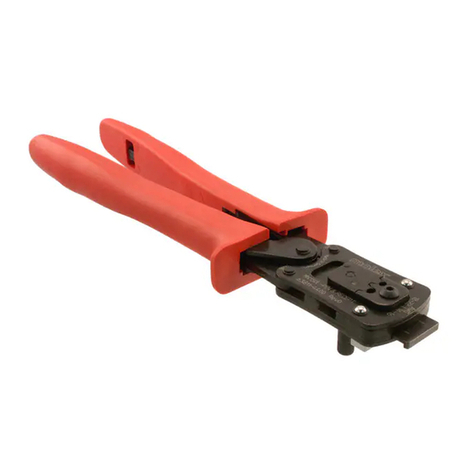
molex
molex 63811-4400 User manual
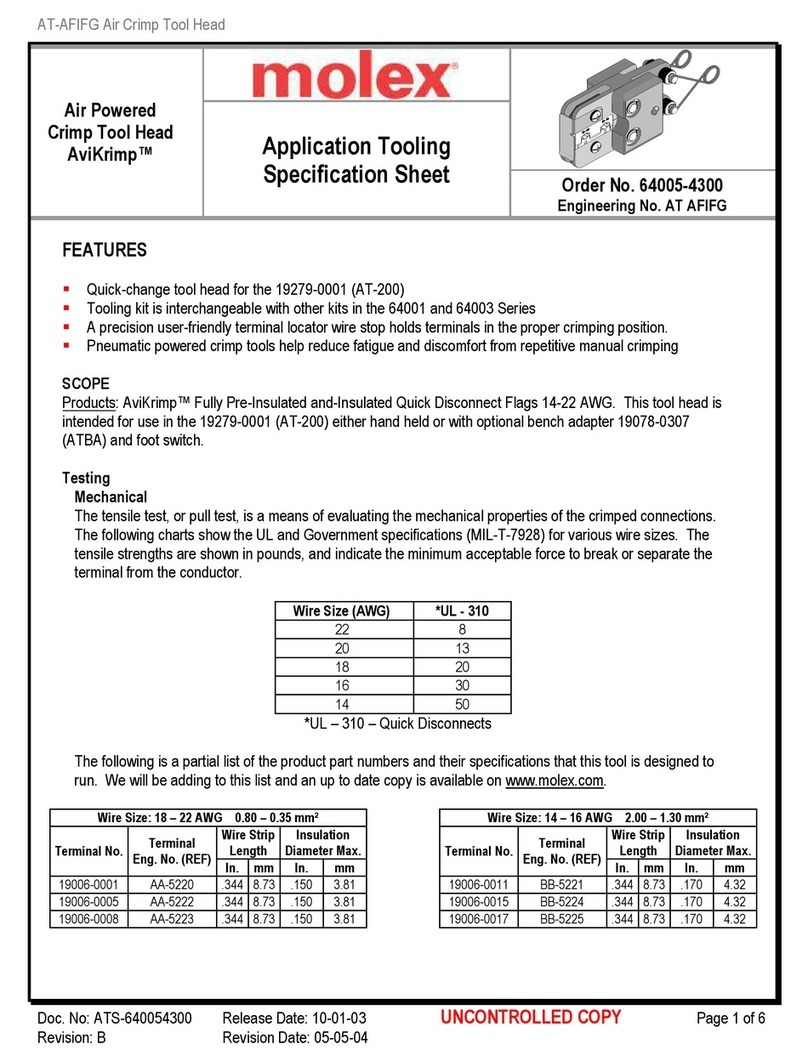
molex
molex AT AFIFG User manual
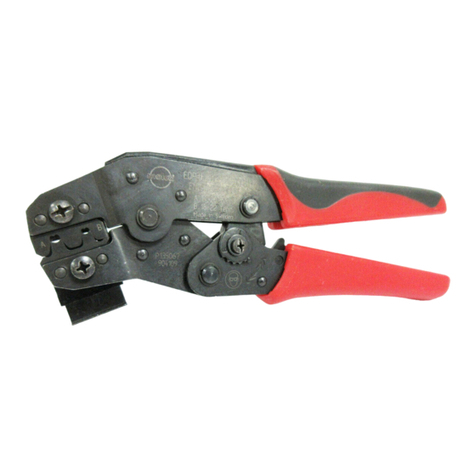
molex
molex CR1031E User manual
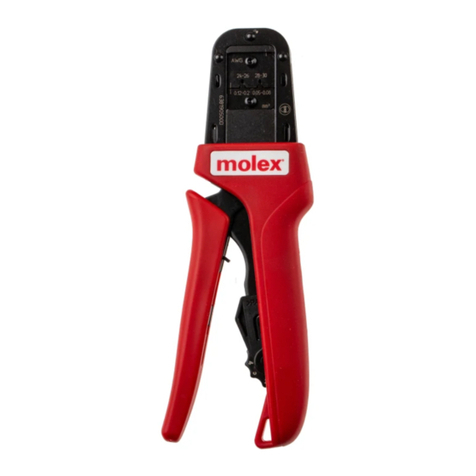
molex
molex 63819-0500 User guide
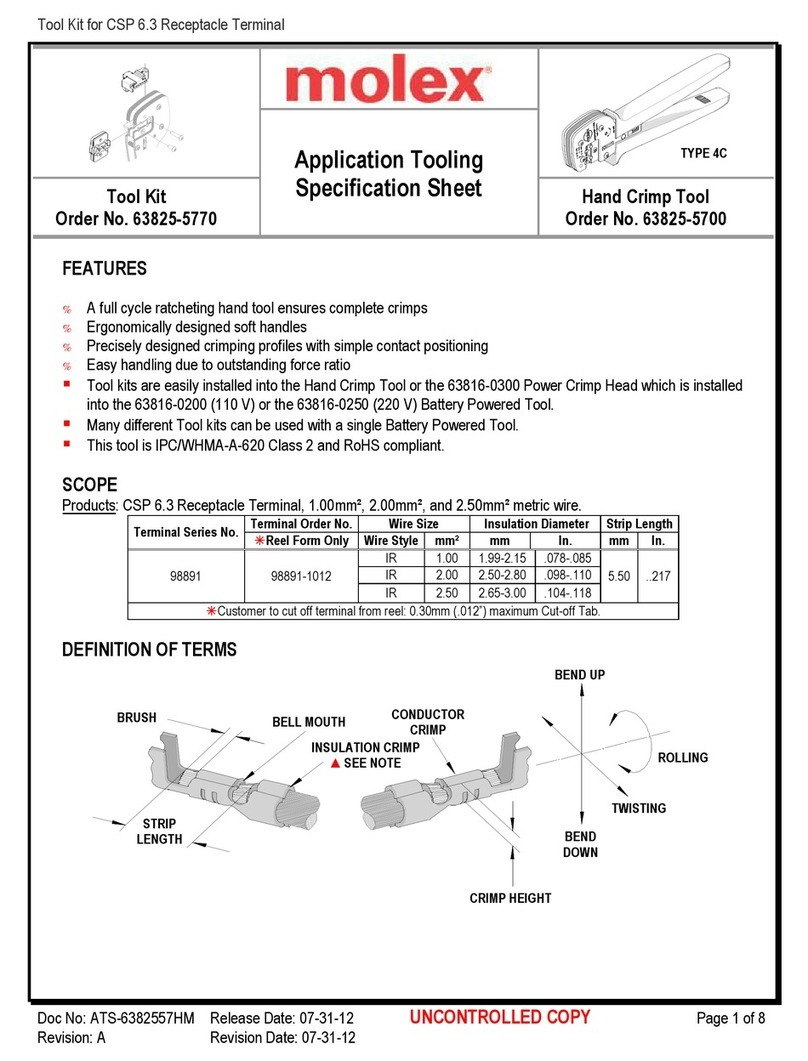
molex
molex 63825-5770 User manual
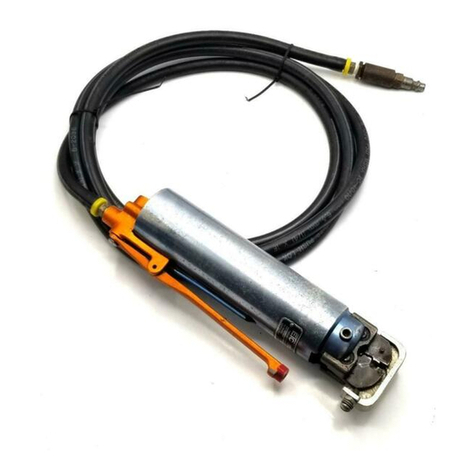
molex
molex AT-200 Manual
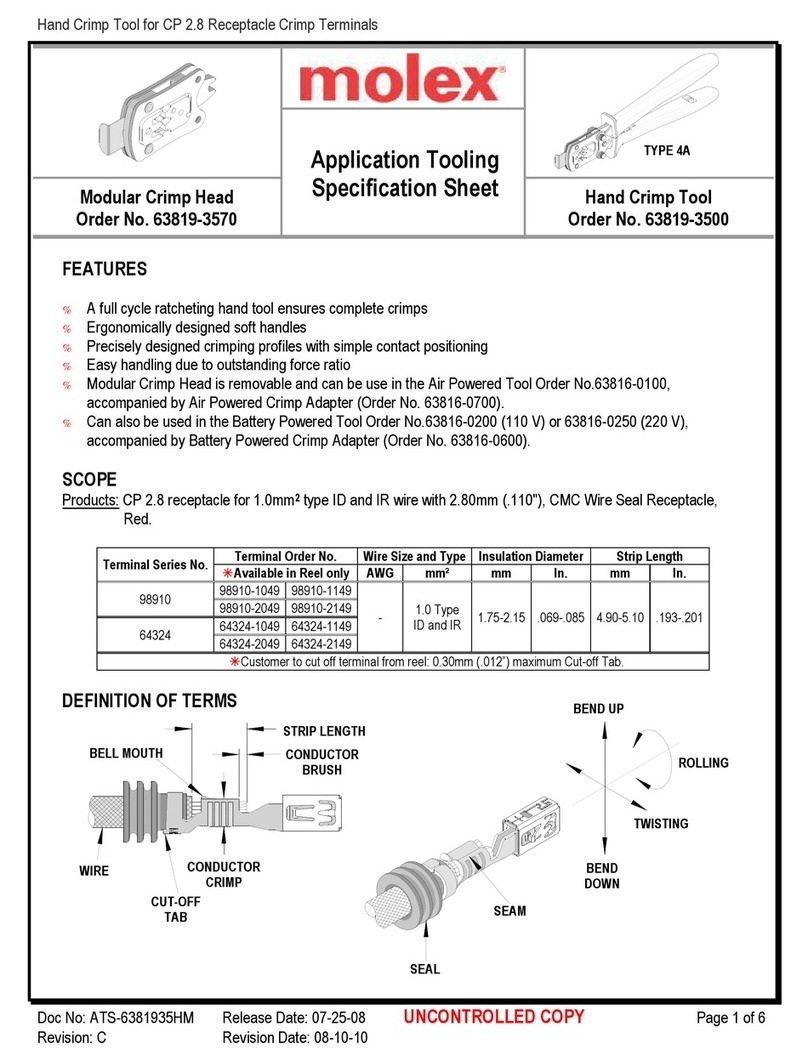
molex
molex 207129 Series User manual
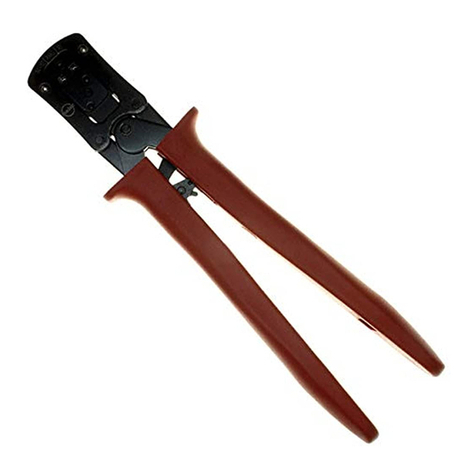
molex
molex 63827-8200 User manual

molex
molex 207129 Series User manual
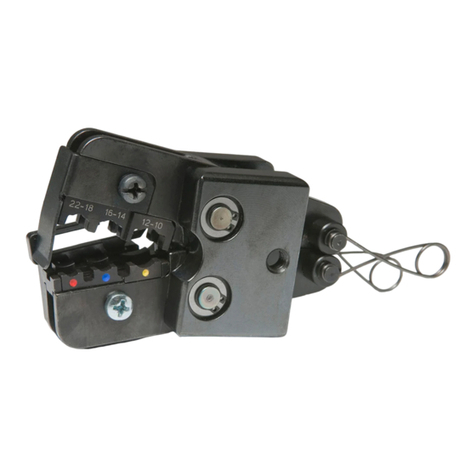
molex
molex AT 1991 User manual

molex
molex 63827-3170 User manual
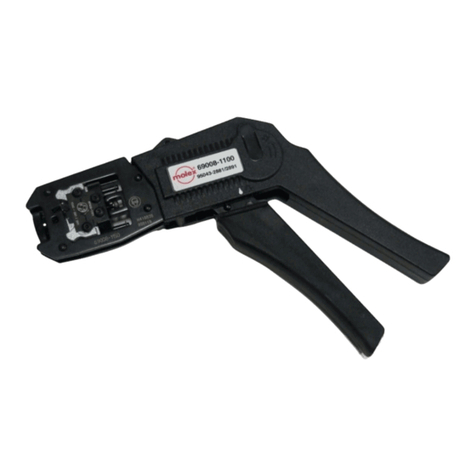
molex
molex 69008-1100 User manual
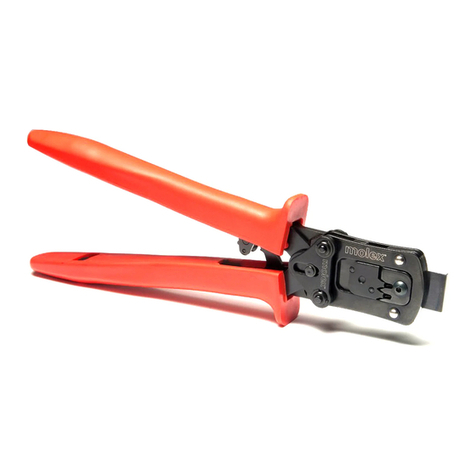
molex
molex 63811-6170 User manual

molex
molex 63828-0600 User manual
Popular Crimping Tools manuals by other brands
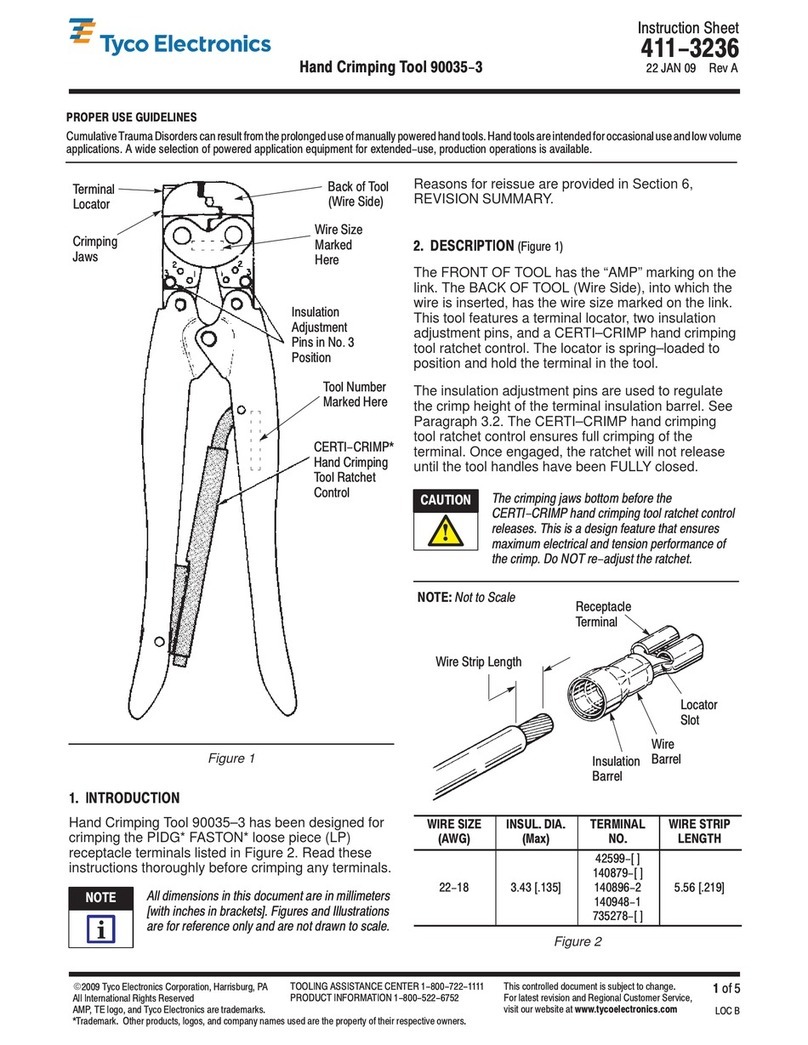
Tyco Electronics
Tyco Electronics 90035-3 instruction sheet

Emerson
Emerson Klauke ES 20RMCCFB manual

Continental Refrigerator
Continental Refrigerator PC150HD quick start guide
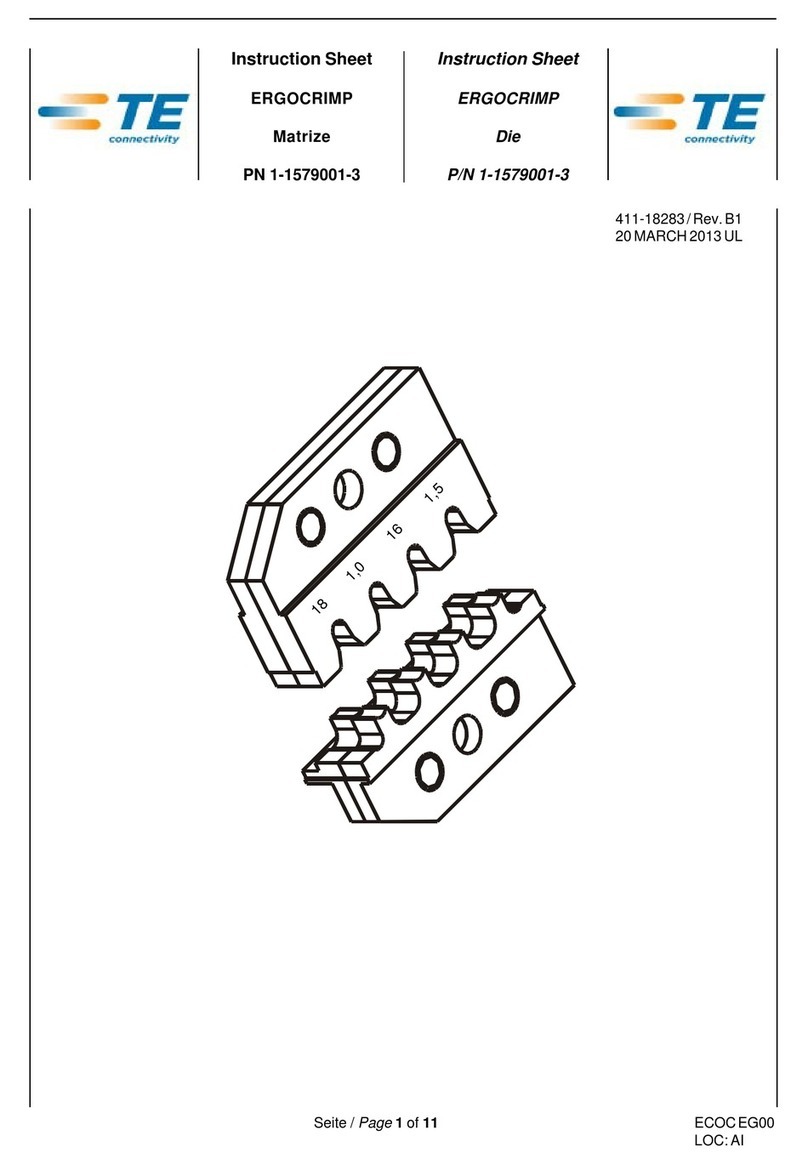
TE Connectivity
TE Connectivity ERGOCRIMP 1-1579001-3 instruction sheet

Tyco Electronics
Tyco Electronics CERTI-CRIMP 90418-1 instruction sheet
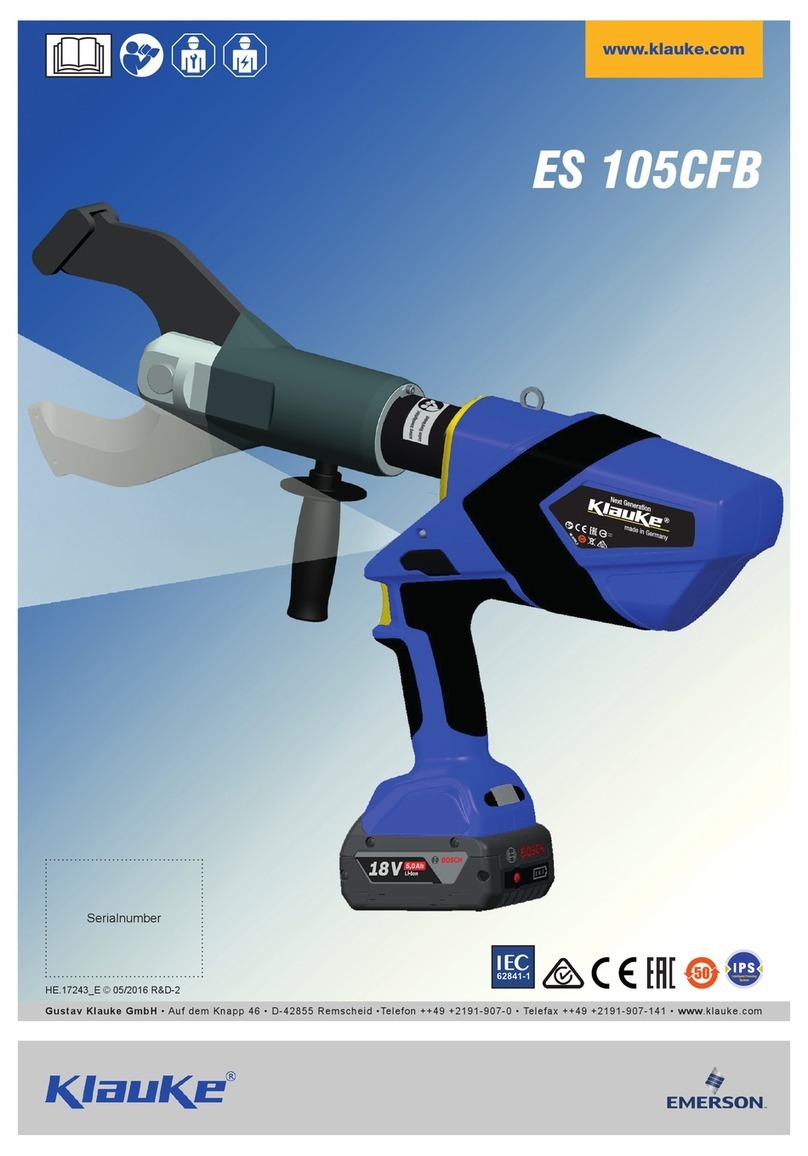
Emerson
Emerson Klauke ES 105CFB manual


